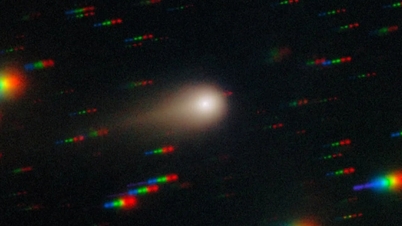Astronomers have made a groundbreaking discovery by confirming the existence of an icy planet orbiting a white dwarf star in a region of space known as the "forbidden zone" - where planets normally cannot exist.
The white dwarf star WD 1856+534, located 82 light-years from Earth in the constellation Draco, is 5.8 billion years old. In 2020, NASA's TESS satellite, along with several ground-based observatories, discovered an object the size of Jupiter orbiting the star every 1.4 days.
A team led by Dr. Mary Anne Limbach of the University of Michigan recently used the James Webb Space Telescope to confirm that the object, dubbed WD 1856+534b, is indeed a planet. Remarkably, the planet is located very close to its host star, 30 times closer than Mercury is to the Sun.
When low- to medium-mass stars like the Sun run out of nuclear fuel, they swell into red giants before exploding their outer layers and leaving behind a dense core – called a white dwarf. Typically , planets within a radius of two astronomical units, or the “forbidden zone,” are destroyed in the process, scientists say.
By analyzing signals received from the James Webb Telescope, researchers determined that WD 1856+534b has a mass about 5.2 times that of Jupiter and a surface temperature of -52°C, making it the coldest exoplanet ever observed in direct light.
However, it is still not the coldest known planet, as planet OGLE-2005-BLG-390Lb near the center of the Milky Way has a surface temperature of about -223°C.
Scientists believe that WD 1856+534b originally had a more distant orbit and moved into the "forbidden zone" after its host star stabilized into a white dwarf, possibly due to the gravitational influence of another planet or star./.
Source: https://www.vietnamplus.vn/phat-hien-hanh-tinh-lanh-gia-trong-vung-cam-cua-vu-tru-post1038364.vnp




























![[Photo] Binh Trieu 1 Bridge has been completed, raised by 1.1m, and will open to traffic at the end of November.](https://vphoto.vietnam.vn/thumb/1200x675/vietnam/resource/IMAGE/2025/10/2/a6549e2a3b5848a1ba76a1ded6141fae)


































































Comment (0)